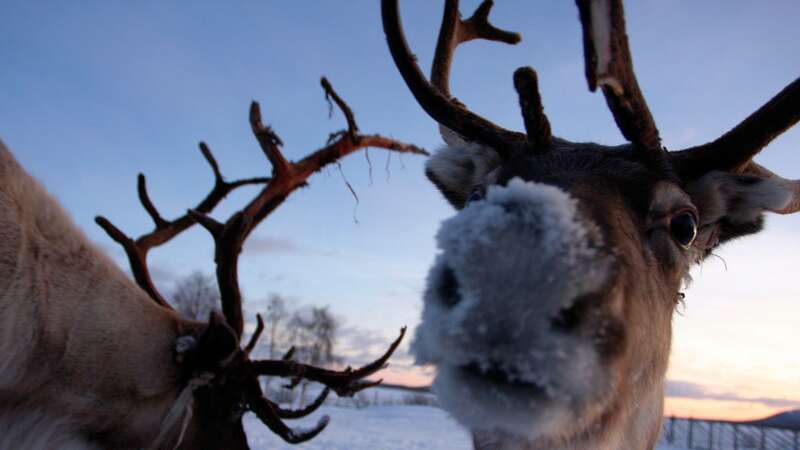
Everyone knows that it's Rudolf's world-famous red nose that helps Santa to guide his sleigh at night.
But you might not be aware that reindeer have another trick that helps them get around in the dark.
Scientists from the University of St Andrews and Dartmouth College in the US found that the mammals have excellent night vision that allows them to locate dinner in harsh wintry conditions.
This is because their eyes transform in colour as the seasons change, from golden-orange in the summer to rich-blue in the winter.
The new study 'Reindeer and the quest for Scottish enlichtment‘, was led by Professor Nathaniel Dominy, Charles Hansen Professor of Anthropology at Dartmouth College, and Dr Catherine Hobaiter and Professor Julie Harris. They tracked the diets of Britain's only free-ranging herd of reindeer, which are found in the Cairngorm mountains in Scotland.
 Man fined £165 after outraging the internet by dying puppy to look like Pikachu
Man fined £165 after outraging the internet by dying puppy to look like Pikachu
Professor Dominy and his team had looked to establish why reindeer are the only mammal with this eye colour-shifting habit, which gives them the ability to pick up ultraviolet (UV) light. It was found that they use their UV vision to track down lichen, a moss-like organism that grows on trees and other spongy surfaces in their natural habitats. Lichen absorbs UV light, while the surrounding snow reflects it - making it easier for the reindeer to tell it apart.
Commenting on the findings, Professor Dominy said: “Reindeer are so cool, but many people think about them only at Christmas. Now is a good time to alert people to their extraordinary visual system.”
"To our eyes, just like for most mammals, pale lichen in white snow is incredibly hard to spot! But to reindeer eyes, the species they need to feed on would stand out as dark patches in the much more reflective snowy landscape.”
Professor Dominy added: “If you can put yourself in their hooves looking at this white landscape, you would want a direct route to your food. Reindeer don’t want to waste energy wandering around searching for food in a cold, barren environment. If they can see lichens from a distance, that gives them a big advantage, letting them conserve precious calories at a time when food is scarce.”
Read more similar news:
Comments:
comments powered by Disqus

































